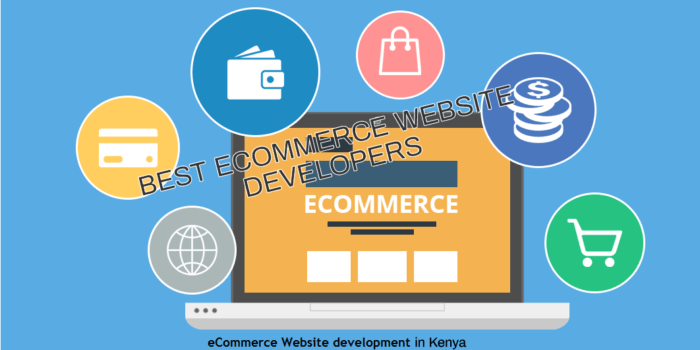When it comes to developing an e-commerce website in Kenya, there are several important steps to consider:
- Planning and Strategy:
- Define your business goals and objectives.
- Identify your target audience and niche market.
- Research your competition and analyze their websites.
- Determine the features and functionalities you want on your e-commerce website.
- Domain and Hosting:
- Choose a domain name that represents your brand and is easy to remember.
- Select a reliable web hosting provider that offers good performance and security.
- Platform Selection:
- Consider using an e-commerce platform or content management system (CMS) that suits your needs.
- Popular options include WooCommerce (WordPress), Magento, Shopify, and OpenCart.
- Evaluate each platform based on factors like ease of use, scalability, customization options, and payment gateway integration.
- Website Design and Development:
- Hire a web designer/developer or a web development agency with experience in e-commerce projects.
- Work closely with them to create a visually appealing and user-friendly website design.
- Ensure that the design is responsive, meaning it adapts well to different screen sizes (mobile, tablet, desktop).
- Product Catalog and Inventory Management:
- Organize your products into categories and subcategories.
- Develop a user-friendly interface for customers to browse and search for products.
- Implement an inventory management system to track product availability.
- Shopping Cart and Payment Gateway Integration:
- Set up a secure and user-friendly shopping cart system for customers to add products.
- Integrate a reliable payment gateway to facilitate online transactions.
- Popular payment gateway options in Kenya include Pesapal, DPO, and Flutterwave.
- Security and SSL Certificate:
- Implement appropriate security measures to protect customer data and transactions.
- Obtain an SSL certificate to secure the connection between the website and users’ browsers.
- Testing and Launch:
- Thoroughly test your website’s functionality, including the shopping cart, payment processes, and user registration.
- Ensure that the website performs well across different devices and browsers.
- Fix any bugs or issues before launching the website.
- Marketing and Promotion:
- Develop an online marketing strategy to drive traffic to your e-commerce website.
- Utilize digital marketing techniques like search engine optimization (SEO), social media marketing, and email marketing.
- Consider using paid advertising channels such as Google Ads or Facebook Ads.
- Ongoing Maintenance and Updates:
- Regularly update your website with fresh content, new products, and promotions.
- Monitor website performance, security, and analytics.
- Stay updated with the latest trends and technologies in e-commerce.





